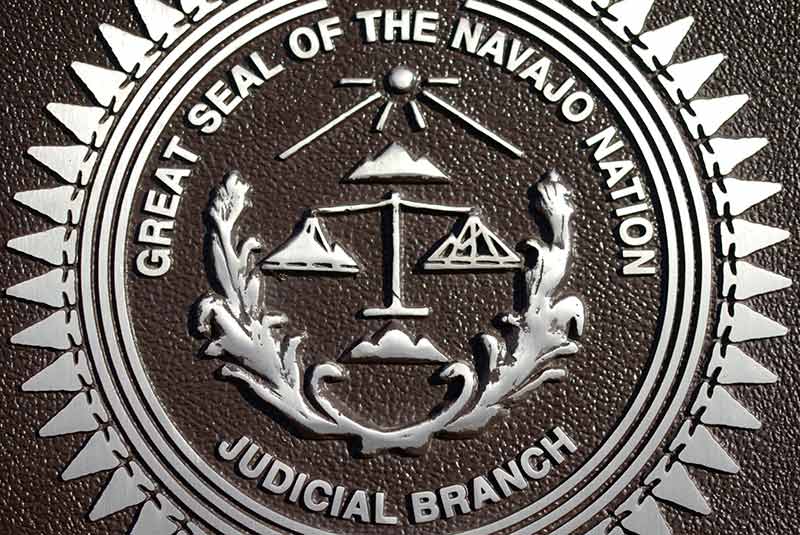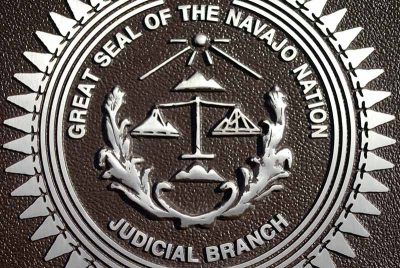Birth of courts difficult

Navajo Times | Donovan Quintero The Navajo Nation court system was born out of a difficult history.
Diné struggled for the right to make, enforce laws
Editor’s note: This is the second in a series on law enforcement issues affecting the Navajo Nation.
WINDOW ROCK

Navajo Times | Donovan Quintero
The Navajo Nation court system was born out of a difficult history.
The tangled history of law enforcement goes back to the first treaties in the 1800s and the efforts to civilize the Native Americans. This history combines the good efforts of the Diné with the clumsy racial views of the Anglos.
In 1870, based on the Treaty of 1868, the U.S. government asked Barboncito, Manuelito, and Ganado Mucho to bring Navajo thieves to justice. The seeds of the Navajo police and the Navajo justice system were planted. But land issues that began long before the U.S. government entered Navajo country, sovereign immunity and fragmented jurisdiction in the three states and 11 counties that overlap the Navajo Nation quickly created a quagmire.
Cherokee Nation v. Georgia
At the 1868 treaty negotiations there are no records that Gen. William T. Sherman informed Navajo leaders of an 1831 U.S. Supreme Court ruling by Justice John Marshall, despite how much it influenced U.S. Indian policy. In Cherokee Nation v. Georgia, Marshall declared the Cherokee tribe a “domestic dependent nation” and said that the tribe was “in a state of pupilage,” in which its relationship with the U.S. resembled “that of a ward to his guardian.” The case affected tribes throughout the country, including the Navajo Nation, which did not have its first official encounter with the U.S. government until 1846, when Gen. Stephen W. Kearny brought troops to Santa Fe during the Mexican-American War.
Marshall based his decision on the doctrine of discovery, an 1823 Supreme Court decision that granted land titles to the government whose subjects occupied a territory whose inhabitants were not subjects of a European Christian monarch. Sherman did not tell Navajo leaders that his government had already claimed the country as its own when he was negotiating the 1868 treaty.
Marshall’s influence chipped away at tribal sovereignty and lands through dozens of acts enacted since. His influence on tribes being “domestic dependent nations” could be read in U.S. Department of Interior Secretary Columbus Delano’s 1873 report to the 43rd U.S. Congress when he reported tribes needed “their intellectual, moral and religious culture” prosecuted, hoping that “humanity and kindness may take place of barbarity and cruelty.”
To read the full article, pick up your copy of the Navajo Times at your nearest newsstand Thursday mornings!
Are you a digital subscriber? Read the most recent three weeks of stories by logging in to your online account.








 Highway 264,
Highway 264, I-40, WB @ Winslow
I-40, WB @ Winslow